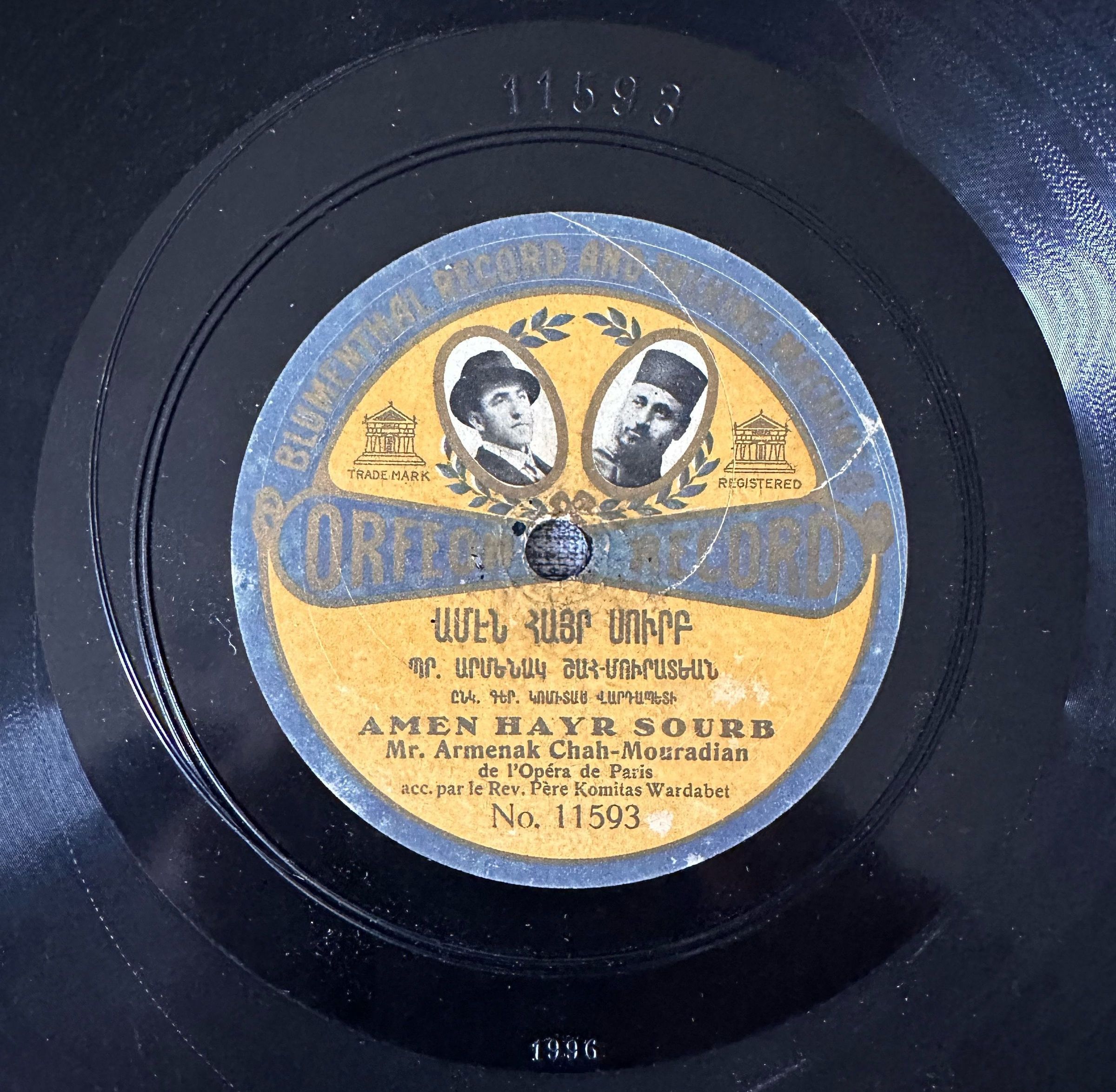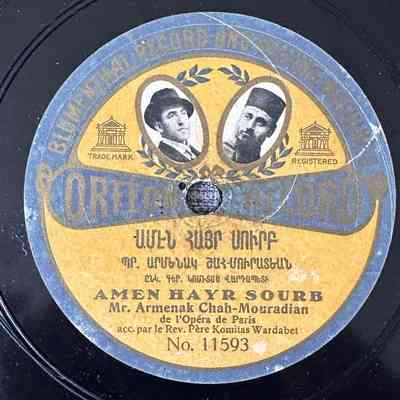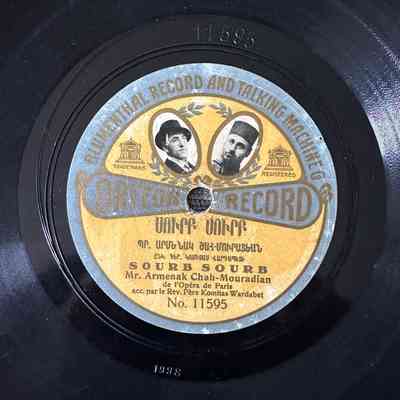Title
Surp SurpTranscription
Սուրբ, Սուրբ, Սուրբ, Տէր զօրութեանց,
լի են երկինք եւ երկիր փառօք քո. օրհնութիւն ի բարձունս:
Օրհնեալ որ եկիր եւ գալոցդ ես անուամբ Տեառն. ովսաննա ի բարձունս:Track Notes
Originally composed by Makar Ekmalian, the hymn "Holy, Holy," often sung during the Divine Liturgy, is a prominent liturgical chant in Christian worship, particularly in the Armenian Apostolic Church. It is a part of the Eucharistic prayer and is based on a passage from the Old Testament, specifically from the book of Isaiah. The hymn is known for its repeated invocation of the holiness of God and its emphasis on the divine glory filling the heavens and the earth.
The hymn is introduced by the priest, who states: "He, before whom the hosts of angels dare not stand, granted us, together with the seraphim and cherubim, to sing this hymn in unison with sacred utterance, and they boldly and loudly cry out together with them, saying..." Following this, the choir and congregation sing the words: "Holy, Holy, Holy, Lord of Hosts. Heaven and earth are full of Your glory. Blessed is He who comes in the name of the Lord. Hosanna in the highest."
This hymn is derived from the vision of the prophet Isaiah, described in the book of Isaiah, chapter 6. In this passage, Isaiah recounts his vision of God’s throne, surrounded by seraphim, who praise God by proclaiming, "Holy, Holy, Holy is the Lord of Hosts; the whole earth is full of His glory" (Isaiah 6:1-3). The repetition of "Holy" emphasizes the absolute sanctity of God, and the phrase "Lord of Hosts" refers to God’s command over the heavenly armies of angels.Title
Amen Hayr SurpTranscription
Ամէն. Հայր Սուրբ,
Որդիդ Սուրբ, Հոգիդ Սուրբ.
Օրհնութիւն Հաւր եւ Որդւոյ եւ Սրբոյ Հոգւոյն
Այժմ եւ միշտ եւ յաւիտեանս յաւիտենից. ամէն:Translation
Amen. Holy Father,
Your Son is Holy, Your Spirit is Holy.
Blessing to the Father, and the Son, and the Holy Spirit,
Now and always and unto the ages of ages. Amen.Track Notes
“Amen, Holy Father” is a medieval Armenian spiritual hymn attributed to Nerses Shnorhali (1102–1173). The hymn appears in three distinct melodic settings within the liturgies of Komitas and Makar Yekmalyan. The final section of the piece, titled “Blessing” (Օրհնութիւն), presents an expanded musical arrangement that brings the piece to an emotional and expressive climax. Among the versions of this hymn, the most widely known is based on Makar Yekmalyan’s Divine Liturgy; Komitas later arranged it in several forms, one of which was definitively written in 1907 for memorial services following the death of Catholicos Khrimian Hayrik.
“Amen, Holy Father” is a doxological hymn that glorifies the Holy Trinity—the Father, the Son, and the Holy Spirit—as eternal beings. It reflects the theological assertion that the Son and the Holy Spirit have always existed with the Father, even before the creation of the world and the beginning of time. This concept can be difficult to grasp through human understanding, which is bound by time and space, yet it remains central to Christian doctrine.
Throughout history, various heretical movements attempted to reinterpret the nature of the Trinity, sometimes denying the eternal presence of the Holy Spirit or disputing the dual divine and human natures of Christ. However, the Armenian Church Fathers, through participation in ecumenical councils and theological debates, consistently affirmed that Jesus Christ is both fully God and fully human, united in one person with two natures.
The hymn “Amen, Holy Father” embodies this faith by equally praising all three persons of the Trinity, offering testimony to their eternal divine unity.

